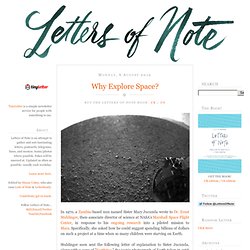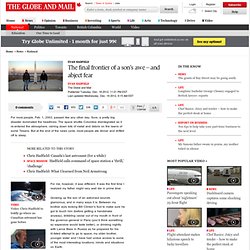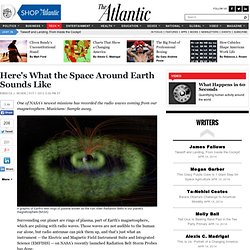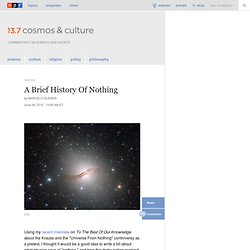

'Brighter than a full moon': The biggest star of 2013... could be Ison - the comet of the century - Science - News. Comet Ison could draw millions out into the dark to witness what could be the brightest comet seen in many generations – brighter even than the full Moon.

It was found as a blur on an electronic image of the night sky taken through a telescope at the Kislovodsk Observatory in Russia as part of a project to survey the sky looking for comets and asteroids – chunks of rock and ice that litter space. Astronomers Vitali Nevski and Artyom Novichonok were expecting to use the International Scientific Optical Network's (Ison) 40cm telescope on the night of 20 September but clouds halted their plans. It was a frustrating night but about half an hour prior to the beginning of morning twilight, they noticed the sky was clearing and got the telescope and camera up and running to obtain some survey images in the constellations of Gemini and Cancer.
When the images were obtained Nevski loaded them into a computer program designed to detect asteroids and comets moving between images. Why Explore Space? .

Specifically, she asked how he could suggest spending billions of dollars on such a project at a time when so many children were starving on Earth. Stuhlinger soon sent the following letter of explanation to Sister Jucunda, along with a copy of "Earthrise," the iconic photograph of Earth taken in 1968 by astronaut William Anders, from the Moon (also embedded in the transcript). His thoughtful reply was later published by NASA, and titled, "Why Explore Space? " May 6, 1970Dear Sister Mary Jucunda:Your letter was one of many which are reaching me every day, but it has touched me more deeply than all the others because it came so much from the depths of a searching mind and a compassionate heart.
The final frontier of a son’s awe – and abject fear. For most people, Feb. 1, 2003, passed like any other day.

Sure, a pretty big disaster dominated the headlines: The space shuttle Columbia disintegrated as it re-entered the atmosphere, raining down bits of metal and debris on the lawns of some Texans. But at the end of the news cycle, most people ate dinner and drifted off to sleep. For me, however, it was different. It was the first time I realized my father might very well die in prime time. Growing up the son of an astronaut sounds glamorous, and in many ways it is.
I didn’t quite understand how lucky we were to have that access, but I always expected it to be there. Columbia changed all that. The news networks milked the disaster as long as they could, then moved on. My father’s previous spaceflight (STS-100) had occurred less than two years before Columbia, which meant that, regardless of scheduling changes related to the disaster, he wouldn’t be flying again any time soon. Elon Musk's Mission to Mars. Maverick entrepreneur Elon Musk Photo: Art Streiber When a man tells you about the time he planned to put a vegetable garden on Mars, you worry about his mental state.

But if that same man has since launched multiple rockets that are actually capable of reaching Mars—sending them into orbit, Bond-style, from a tiny island in the Pacific—you need to find another diagnosis. That’s the thing about extreme entrepreneurialism: There’s a fine line between madness and genius, and you need a little bit of both to really change the world. All entrepreneurs have an aptitude for risk, but more important than that is their capacity for self-delusion. Indeed, psychological investigations have found that entrepreneurs aren’t more risk-tolerant than non-entrepreneurs. I have never met an entrepreneur who fits this model more than Elon Musk.
And he is leading the private space race with SpaceX, which is poised to replace the space shuttle and usher us into an interplanetary age. Elon Musk: That’s true.
Magnetosphere in Sound. One of NASA's newest missions has recorded the radio waves coming from our magnetosphere.

Musicians: Sample away. A graphic of Earth's twin rings of plasma known as the Van Allen Radiation Belts in our planet's magnetosphere (NASA) Surrounding our planet are rings of plasma, part of Earth's magnetosphere, which are pulsing with radio waves. Those waves are not audible to the human ear alone, but radio antennae can pick them up, and that's just what an instrument -- the Electric and Magnetic Field Instrument Suite and Integrated Science (EMFISIS) -- on NASA's recently launched Radiation Belt Storm Probes has done. Les objets célestes - Astronomie. Tardigrades: Adorable Extremophiles. A Brief History Of Nothing : 13.7: Cosmos And Culture. Using my recent interview on To The Best Of Our Knowledge about the Krauss and the "Universe From Nothing" controversy as a pretext, I thought it would be a good idea to write a bit about what physics says of "nothing," and how this tricky notion evolved.

(Here is something I wrote for 13.7 on this a few weeks back.) We may start with Aristotle, who decided that "Nature abhors a vacuum" and thus declared that there was no such thing as nothing, understood as absolute emptiness. Spaced was filled up with aether, the same stuff that made up all celestial objects, from the moon up. Aristotle was reacting to the atomists, who, before him, had declared that matter was made of indivisible atoms moving in the void. Fast forward to the early 17th century and Descartes also states that there is no such thing as empty space. The ping pong continued in the 19th century, when Maxwell figured out that light was made of waving electric and magnetic fields. Untethered. Neil deGrasse Tyson - We Stopped Dreaming (Episode 1) Einstein.
Cosmic latte.